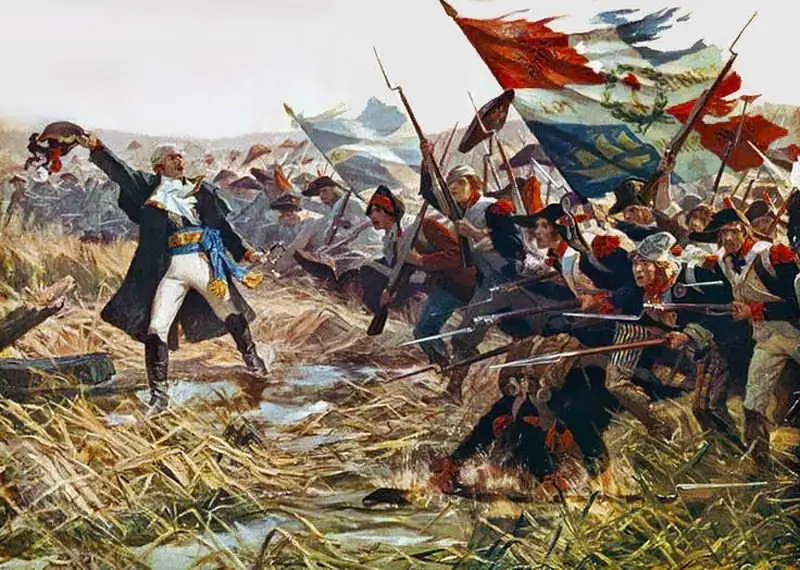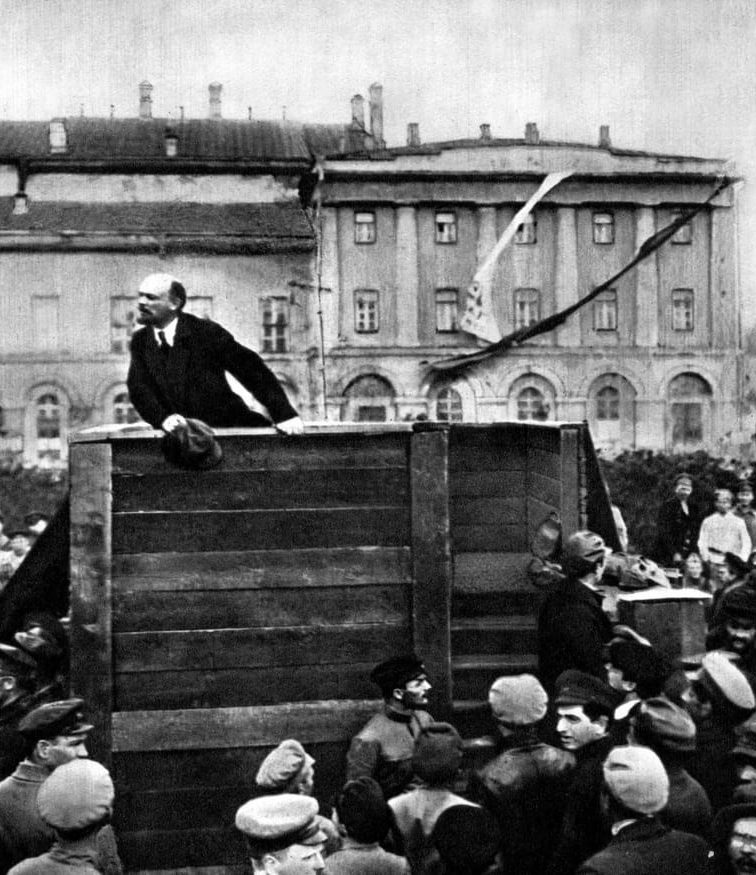Imagine a world where a hailstorm kickstarts a revolution, where time is redefined with a 10-hour day, and where political satire reaches new, risqué heights. Picture a queen paying for a swift execution and animals getting a reprieve to start the world’s first public zoo.
These aren’t scenes from a fantasy novel; they’re snippets from one of history’s most tumultuous periods – the French Revolution. Far beyond the textbook tales of guillotines and cries for liberty, this era brims with bizarre, unexpected twists and turns.
Delve into these fun facts about the French Revolution and discover a past as fascinating as it is fantastical.
1. Pre-Revolutionary Hailstorm’s Impact
In the late 1780s, a catastrophic hailstorm devastated French crops, exacerbating existing economic hardships. This agricultural disaster led to severe food shortages, notably in bread, fueling public discontent and setting the stage for the French Revolution.
This event illustrates how natural disasters can directly influence historical events and social upheavals.
2. Decimal Time Experiment
During the French Revolution, a radical change in timekeeping was introduced: the decimal time system. From 1793 to 1805, France experimented with a 10-hour day, each hour having 100 minutes, and each minute 100 seconds.
This attempt to rationalize time, though short-lived, reflects the revolutionary spirit to overhaul traditional systems and embrace Enlightenment ideals.

A decimal clock, Musée des Arts et Metiers, Paris. From the 1790s. graham chandler / Flickr
3. Tennis Court Oath Location
The Tennis Court Oath, a defining moment of the French Revolution, was uniquely held on a tennis court on June 20, 1789. This pivotal event occurred when the Third Estate delegates, representing commoners, were locked out of a meeting of the Estates-General.
They gathered at a nearby tennis court, vowing not to disband until a new constitution was established, symbolizing a significant step towards democracy in France.

Image: worldhistory.org
4. Liberte, Egalite, Fraternite: A Global Rallying Cry
“Liberty, Equality, Fraternity” – the motto born out of the French Revolution, encapsulated its core ideals and inspired movements worldwide.
It voiced the universal aspiration for freedom and equal rights, becoming a beacon for future revolutions and democratic movements, including the Russian Revolution over a century later.

Image: schreiben.net
5. Factors Leading to the Revolution
The storm leading to the French Revolution was brewed from a mix of social, economic, and political factors.
Economic hardship, exacerbated by Louis XVI’s financial mismanagement, led to skyrocketing bread prices, a staple in the French diet. Additionally, the feudal system and social inequality created deep rifts between the classes. Enlightenment ideas, promoting concepts like democracy and individual rights, further fueled the discontent.
Key events included the Assembly of Notables in 1787 and the Estates-General in 1789, where the Third Estate’s demands for representation set the stage for revolution.
6. Women’s March on Versailles
On October 5, 1789, the Women’s March on Versailles became a landmark event in the Revolution. Sparked by bread shortages, thousands of women, joined by National Guardsmen, marched from Paris to Versailles. They demanded action from King Louis XVI on the food crisis.
This march was significant not only for its immediate impact—forcing the royal family to move to Paris—but also for symbolizing the power of popular protest in the Revolution.

French Revolution: The Women’s March on Versailles. Image: historyquiz.com
7. Different Forms of Execution
The French Revolution is notorious for the guillotine, but it wasn’t the only method of execution. For instance, the ‘Noyades of Nantes’ involved mass drownings of counter-revolutionaries in the Loire River. Additionally, firing squads and hangings were employed.
The use of diverse and brutal execution methods highlights the period’s extreme and often chaotic nature in dealing with perceived threats to the revolutionary ideals.

Image: Wikimedia Commons
8. Ménagerie du Jardin des Plantes: First Public Zoo
In 1793, the French Revolution led to the founding of the Ménagerie du Jardin des Plantes in Paris, the first public zoo. This initiative reflected the revolutionary values of equality and education.
The zoo was established as part of the Jardin des Plantes, a major botanical garden, and showcased a variety of exotic animals previously owned by the monarchy and nobility.

Image: jardindesplantesdeparis.fr
9. Satirical Political Pornography
During the Revolution, satirical political pornography, known as “libelles,” became a tool for expressing dissent against the monarchy. These pamphlets and sketches often contained explicit and scandalous content, particularly targeting figures like Marie Antoinette.
This use of satire was not only a form of political expression but also a reflection of the era’s radical freedom of speech and the public’s growing disillusionment with the monarchy.

Image: Yandex
10. The Flight to Varennes
In a dramatic episode of the French Revolution, King Louis XVI and his family attempted to escape from Paris in June 1791, an event known as the Flight to Varennes.
Disguised and aided by loyalists, they aimed to reach the royalist stronghold of Montmédy. Unfortunately for them, their plan unraveled due to delays and recognition, culminating in their capture at Varennes.
This failed escape significantly undermined the monarchy’s standing and accelerated the push towards a republic.
11. King Louis XVI’s Near Escape from Execution
King Louis XVI’s fate was almost different. During his trial, the National Convention was deeply divided over his punishment.
The final vote for his execution was narrowly decided – 361 votes for and 288 against. This slim margin illustrates the divided sentiments in revolutionary France and underscores the precarious nature of Louis XVI’s final days.
His execution in January 1793 marked a definitive end to the French monarchy and heralded a new, tumultuous phase of the Revolution.
12. African Slave Liberation
A significant but lesser-known aspect of the French Revolution was its impact on slavery.
In 1794, the revolutionary government decreed the abolition of slavery, leading to the liberation of over 10,000 African slaves. However, this progressive step was short-lived, as Napoleon reinstated slavery in 1802.
This episode reflects the complex and often contradictory nature of revolutionary policies and their impact on global issues.
13. Tricolored Cockade Fashion
The tricolor cockade, comprised of blue, white, and red, emerged as a powerful symbol during the French Revolution. Worn on hats, it became a fashion statement and a political symbol, representing revolutionary ideals.
Initially, blue and red were the colors of Paris, while white was added to symbolize the monarchy. Over time, it transformed into a symbol of the Republic and national unity.

Image: Quora
14. Croissant’s Revolutionary Popularity
The croissant’s popularization in France is often linked to the French Revolution, although its exact origin is debated.
One theory suggests that the croissant was adapted from the Austrian kipferl after the defeat of the Turks in the Battle of Vienna in 1683, a symbol of victory over the Ottoman crescent.
Its transformation into a French culinary staple is thought to have occurred during the late 18th century, embodying the Revolution’s blending of cultures and tastes.
15. Marie Antoinette’s Hairstyles
Marie Antoinette, infamous for her extravagant lifestyle amidst France’s economic crisis, made a statement with her towering hairstyles.
Her most iconic style, the “pouf,” often included extravagant decorations symbolizing political events or personal interests, such as a model ship to commemorate a naval victory.
These elaborate hairstyles became a symbol of the decadence of the French monarchy in the years leading up to the Revolution.

Image: Wikimedia Commons
16. Guillotine as an Equalizer
The guillotine, introduced in 1792 and named after Dr. Joseph-Ignace Guillotin, was initially seen as a humane method of execution.
It became a symbol of equality in death during the Revolution, as it was used for both commoners and nobility, including King Louis XVI and Marie Antoinette.
The guillotine represented the revolutionary ideals of equality and justice, contrasting with the previous execution methods that varied by social class.

Image: teenvogue.com
17. Revolution Spurs Total War
The concept of ‘total war’ emerged during the French Revolutionary Wars, marking a shift in warfare. This period saw the mass mobilization of society for the war effort, including widespread conscription. Every French citizen was expected to contribute, leading to the formation of large armies fueled by revolutionary zeal.
The French Revolution’s total war approach, amid political and military turmoil, led to several significant conflicts. These included the French Revolutionary Wars against various European coalitions, the rise of Napoleon Bonaparte through his Italian campaigns, and the eventual formation of the Napoleonic Empire.
These wars redefined European geopolitics, leading to the spread of revolutionary ideas and a new era of conflict across the continent, shaping the political landscape of Europe for years to come.

Image: Wikimedia Commons
18. Marie Antoinette’s Final Apology
Marie Antoinette, the last Queen of France before the revolution, reportedly uttered a surprising apology as her final words. Before her execution, she accidentally stepped on her executioner’s foot and instinctively said, “I’m sorry.”
This unexpected display of courtesy in such a grim moment adds a humanizing and somewhat ironic layer to the image of the queen, who is often remembered for her alleged detachment from common people’s struggles.

Marie Antoinette’s final moments before her execution. Image: worldhistory.org
FAQ
When did the French Revolution begin and when did it end?
The French Revolution began on May 5, 1789, with the Estates-General meeting, and ended on November 9, 1799, marked by Napoleon Bonaparte’s coup d’état and the establishment of the Consulate.
Who won the French Revolution?
The French Revolution culminated in the overthrow of the Bourbon monarchy and the aristocracy. It was the revolutionaries, who established a republic, that emerged victorious, leading to long-term social and political changes.
Who leads the French Revolution?
The French Revolution was led by various factions over time, including the Jacobins under leaders like Maximilien Robespierre and Georges Danton, and the Girondins. It lacked a singular leader.
Who was the French Revolution fought between?
The French Revolution involved conflicts between the monarchy and its supporters, including conservative elements of society, and revolutionary groups seeking to overthrow the feudal system and establish a republic.
Why French Revolution is very important?
The French Revolution is significant for introducing democratic ideals, challenging feudalism and absolute monarchy, and inspiring future revolutions. It profoundly influenced modern political thought and practice.
What made the French revolution start?
Factors that sparked the French Revolution include a financial crisis due to royal mismanagement and costly wars, societal inequalities under the feudal system, the influence of Enlightenment ideas, and King Louis XVI’s ineffective leadership.







